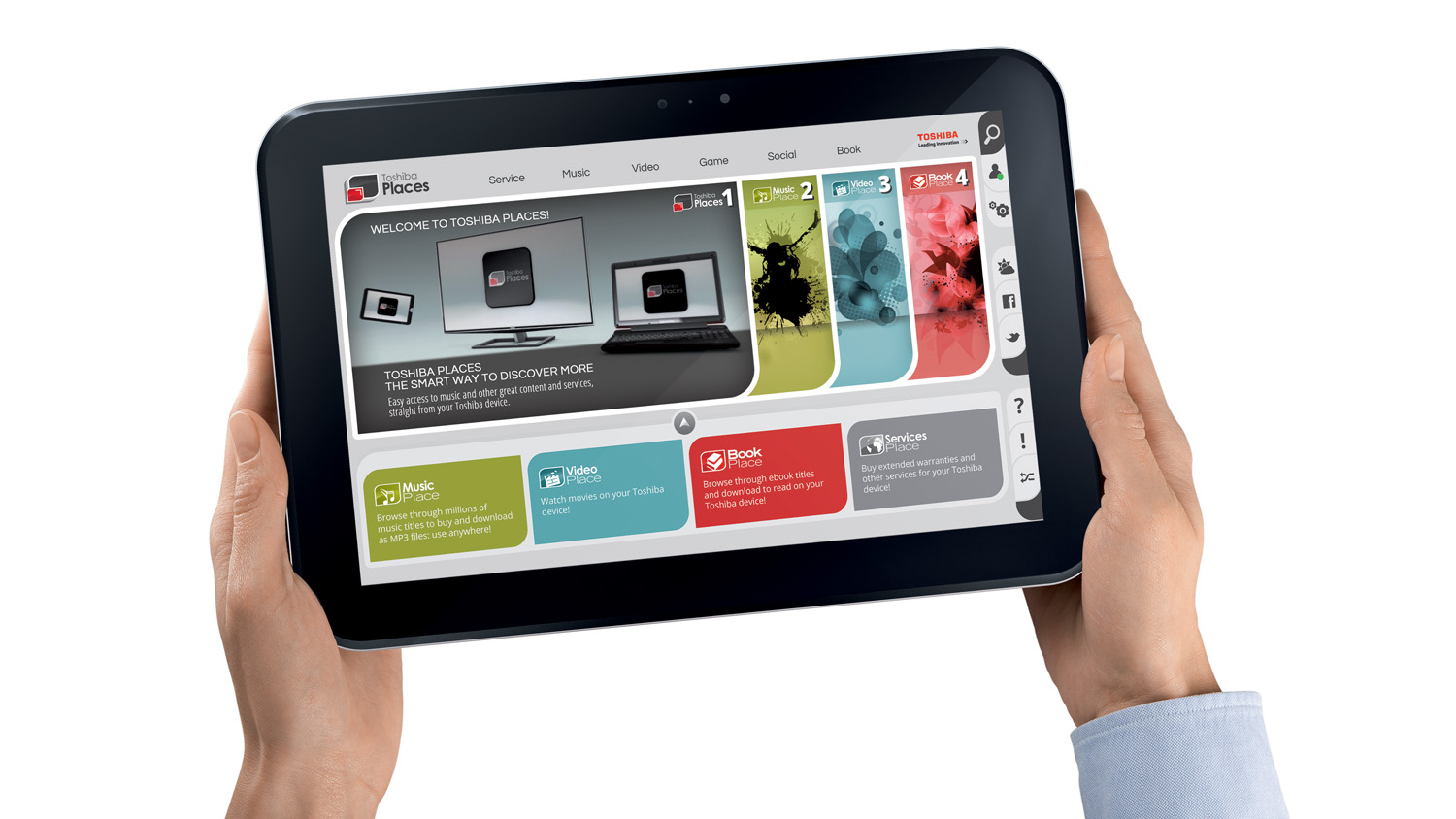TechRadar Verdict
The Toshiba AT300 offers native Android, quad-core power and a great build quality - along with a slick design - at a price tag that will seriously tempt non-Apple devotees.
Pros
- +
Great price
- +
Native Android
- +
Quad-core power
- +
Slim chassis
Cons
- -
Poor camera
- -
Average display
- -
Chunky connector
- -
No Android Jelly Bean
Why you can trust TechRadar
The Toshiba AT300 is the successor to the world's skinniest 10-inch tablet, the Toshiba AT200. And while there are an extra few millimetres on the waistline, you're getting a much more complete tablet experience and a far healthier processor, courtesy of the quad-core CPU packed inside.
The obvious question when considering any 10-inch tablet that doesn't have a shiny fruit-based logo on the back is why should you buy this instead of buying an iPad?
This was a much easier question to answer in the past. The answer was "you wouldn't". Android was, to put it kindly, a mess on the bigger display of a tablet, and prices were often on a par or even more hefty than what you'd fork out to buy Apple's latest slate.
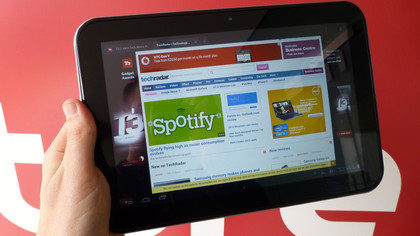
However, the Android tablet revolution is now in full swing, with a raft of high-power, well built devices coming out of all corners, boasting two key ingredients: an operating system that has actually been developed with a larger display in mind, and a much more appealing price tag.
The Toshiba AT300, thankfully, ticks both of these boxes - offering Android 4.0 Ice Cream Sandwich straight out of the box. It costs £329 in the UK and $399.99 in the US (where it's called the Toshiba Excite 10) for the 16GB version, or £379/$449.99 for the 32GB one.
That's £70/$100 to £100/$150 cheaper than Apple's third generation iPad, and is a price tag that puts Toshiba's tablet up against the Acer Iconia Tab A510 and Asus Transformer Pad 300.
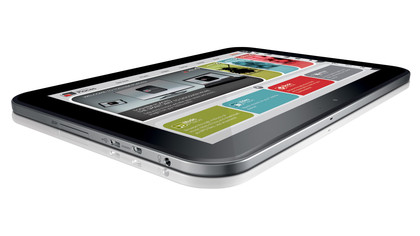
Like those tablets, the Toshiba AT300 doesn't just offer a tempting price and a solid software setup - there's also plenty of power to get excited about, courtesy of the quad-core Nvidia Tegra 3 processor onboard.
Sign up for breaking news, reviews, opinion, top tech deals, and more.
Of course, Google has also shaken up the market in the last month or so (in partnership with Asus), with the launch of the Tegra 3-powered Nexus 7, which can be yours for £159/$199.
The Toshiba AT300 goes by the more thrilling moniker of the Toshiba Excite 10 in the US. Quite why the Japanese company decided to give the UK version a much less exciting label is anybody's guess.
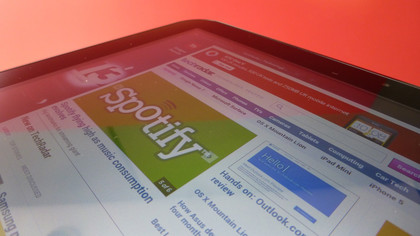
US customers also get the option of a 64GB version for $549.99, which UK consumers do not get.
Features
Albeit slightly chunkier, the Toshiba AT300 definitely pays tribute to its super-skinny older brother the AT200 on the design front, with a silver trim and back and a curved black face. It's hardly original but, let's face it, it's not as if Toshiba is the only company guilty of offering up a tablet that basically looks like all the others.
It's the little details that set a tablet apart, and in the case of the Toshiba AT300 this equates to a textured aluminium backing (long gone is the awful rubberised backing of Toshiba's original tablet, the AT100/Toshiba Thrive) and an attractive silver trim that gains girth at the top edge of the back panel to house the camera lens and flash.
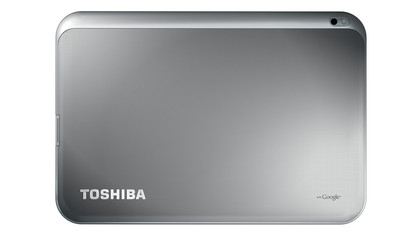
On the front, the 10.1-inch Corning Gorilla Glass display curves nicely into the black bezel, although we're not too sure about the noticeable lip where the glass meets the plastic edge.
Measuring 8.95mm thick, the Toshiba AT300 is around 1.2mm thicker than its predecessor, although it is still much more slight than the new iPad 3, and would make the likes of the Acer Iconia Tab A510(10.92mm) sick with anorexic rage. Its dimensions are 261 x 179 x 8.95mm and, with a weight of just 590g, it's an incredibly pleasing tablet to hold in the hand, even for long periods.
Despite its lightweight svelteness, the Toshiba AT300 feels reassuringly solid, with little or no flex, and we're confident that it'd be fine if you chucked it in your bag and took it out and about.
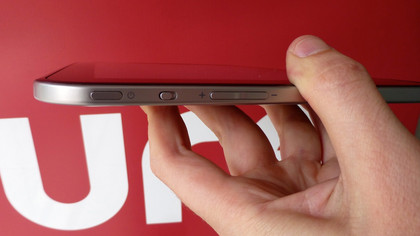
There's no 3G option, so you'll have to make use of Wi-Fi hotspots, or tether the Toshiba AT300 to your smartphone.
That 10.1-inch display that we talked about is of the IPS variety and boasts a 1280 x 800 resolution, offering a decent PPI count of 149. Obviously, the likes of the new iPad and the Asus Transformer Pad Infinity trump the AT300 in this respect. But, for less than £350/$400, you are getting a good display, with acceptable viewing angles.
The colours could be a little more vibrant, and we did find that the Toshiba AT300 struggled in bright sunlight, even with Toshiba's Resolution+ video enhancer tech switched on. There was a touch of backlight bleeding on dark images and movies as well, although you'd have to look pretty closely to notice (we were, obviously).
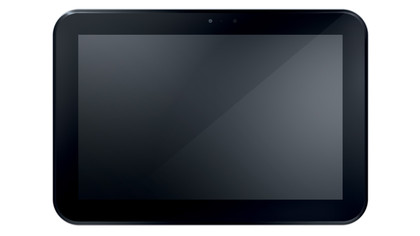
Powering the proceedings is a quad-core Nvidia Tegra 3 processor clocked at 1.3GHz, along with 1GB of RAM. Your storage options are 16GB or 32GB, and there's the option of extending that by a further 32GB using an SD card. Not a microSD card - a full sized one, which is a nice option to have, especially if you want to easily load your digital camera images or movies onto your tablet.
You can then view back your media on the big screen using the Micro HDMI port, which sits next to a Micro USB one. These sit on the same edge as the SD card reader (which is filled with a piece of plastic that can be removed completely as per a laptop) and the 3.5mm headphone jack.
On the opposite edge sits a fairly large volume rocker, an orientation lock and the power button. The bottom edge hosts the dual speaker grills and the proprietary Toshiba connector port.
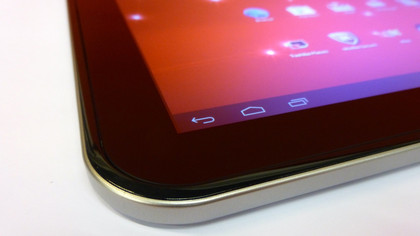
There's no physical buttons on the front - Toshiba has decided to practice what Google preaches by going for soft touchscreen buttons only.
Toshiba is promising that the Lithium-ion polymer battery will provide 10 hours of video playback, 36 hours of audio playback or 168 hours on standby. We'll detail how we got on with battery life later on in the review.
